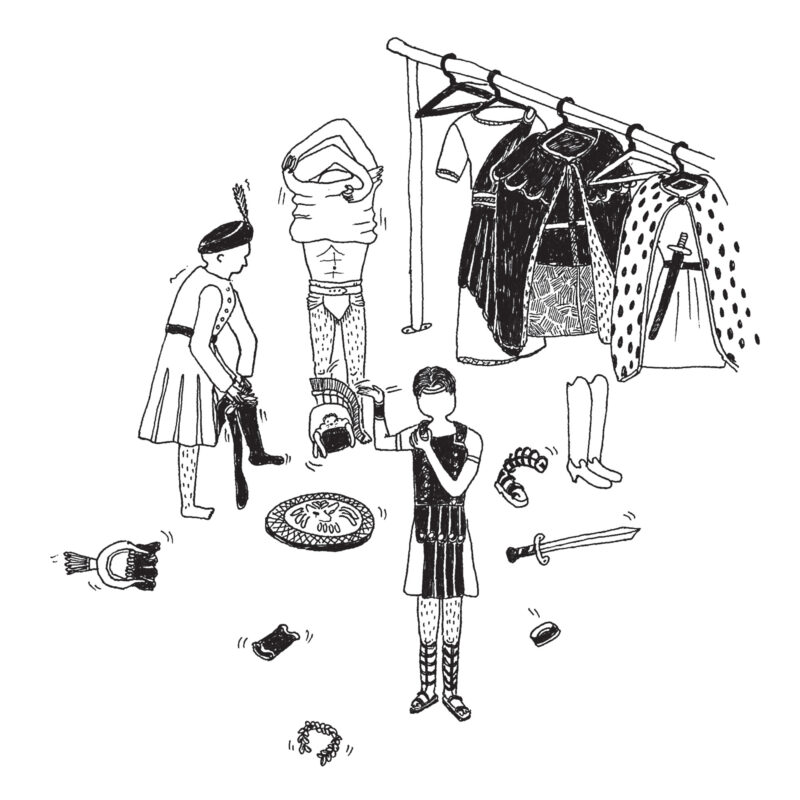100 years in One Month: Aliens

Birutė Bikelytė's illustration
Lithuanians appeared in history like aliens. Aliens from ancient Rome. In a 16th century chronicle Lithuania’s history begins 5526 years after the creation of the world, when ‘Duke’ Palemon, having suffered persecution under Emperor Nero, left Rome with 500 of his comrades and after long journeys ‘by sea and ocean’ came to the Baltic. From these travellers supposedly were descended the dynasties of rulers and noble families who ruled the Lithuanian state in the Middle Ages – in the Grand Duchy of Lithuania. Travelling and founding new cities and castles from Vilnius and Samogitia to Kiev and Smolensk these legendary Lithuanian dukes marked the territory which they had to defend against attacks from Moscow, the Tatars and Turks.
The Lithuanians in the Middle Ages strove to be equal to the other nations of Europe, which were competing amongst themselves not just for victory in the fields of politics and war, but also for a more noble origin. The Lithuanians, the last nation in Europe to adopt Christianity, immediately expressed a desire to become Romans. One Lithuanian writer of the time diligently recorded 74 words that are common to Lithuanian and Latin, while the wolf in the legend about the founding of Vilnius as the capital which appeared to Grand Duke Gediminas in a dream was a direct reminder of the history of the founding of Rome. In this way visions for the future of the nation were inspired by images of a legendary past.
Four hundred years later, the signatories of the act re-establishing the Lithuanian state proclaimed on 16 February 1918 most probably did not believe in the Roman origin legend. The Lithuanians then did not want to be thought of as arrivals from somewhere else but as autochthons.
However, the vision of ‘a great Lithuanian’ was firmly rooted in the memory of a modern Lithuania. The 500th anniversary in 1930 of the death of Vytautas the Great, Lithuania’s ruler in the Middle Ages, was the biggest national celebration in the interwar years. And all of today’s three million Lithuanians know that Lithuania in the Middle Ages was the largest state in Europe in terms of territory, stretching from the Baltic to the Black Sea. The names of the Grand Dukes – Gediminas, Algirdas, Kęstutis, Vytautas – were given to generations of boys both in independent Lithuania in the interwar years and during the Soviet period. It should come as no surprise that both the leaders of the state of Lithuania restored in 1990 were Vytautas (Landsbergis) and Algirdas (Brazauskas).
Rimvydas Petrauskas